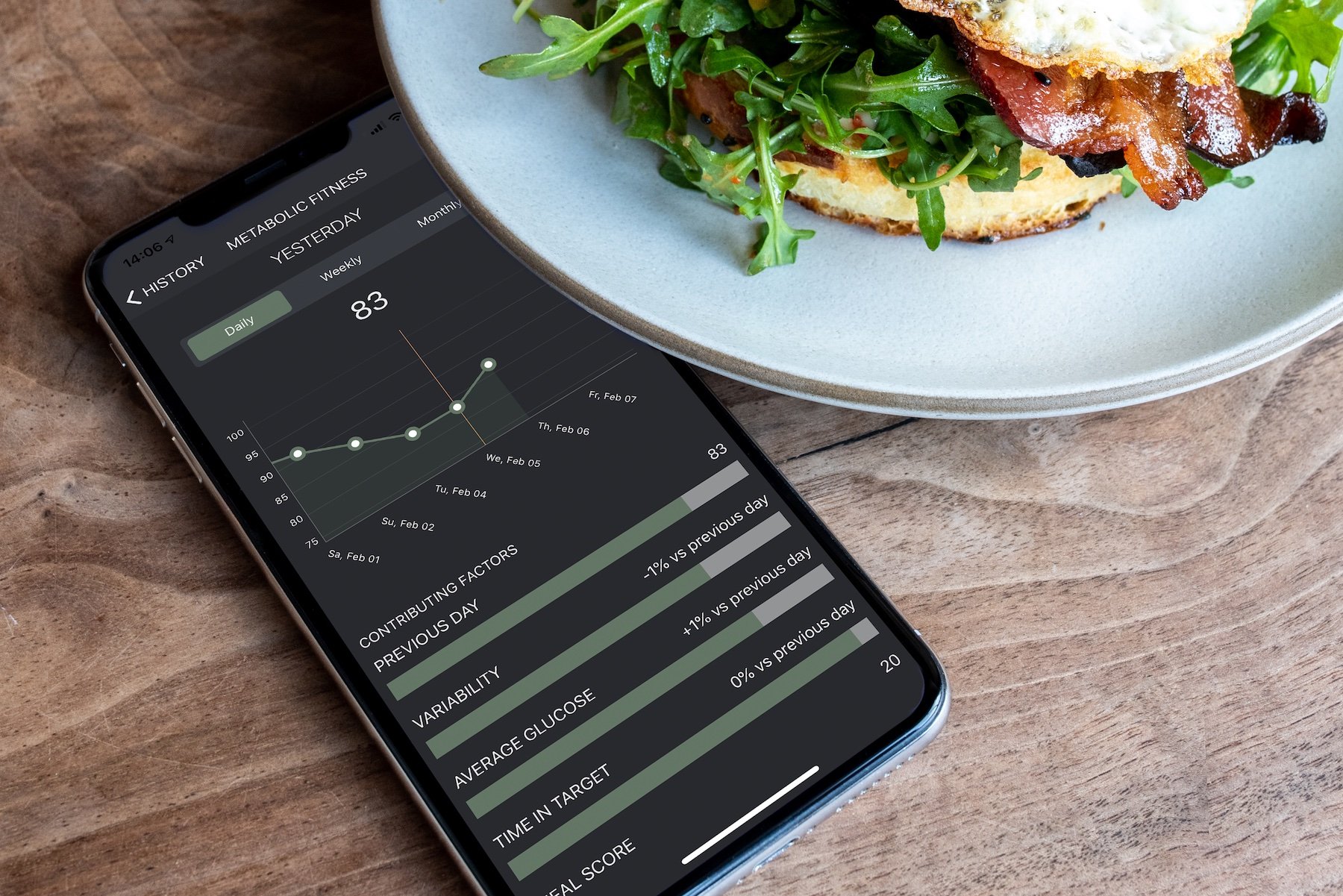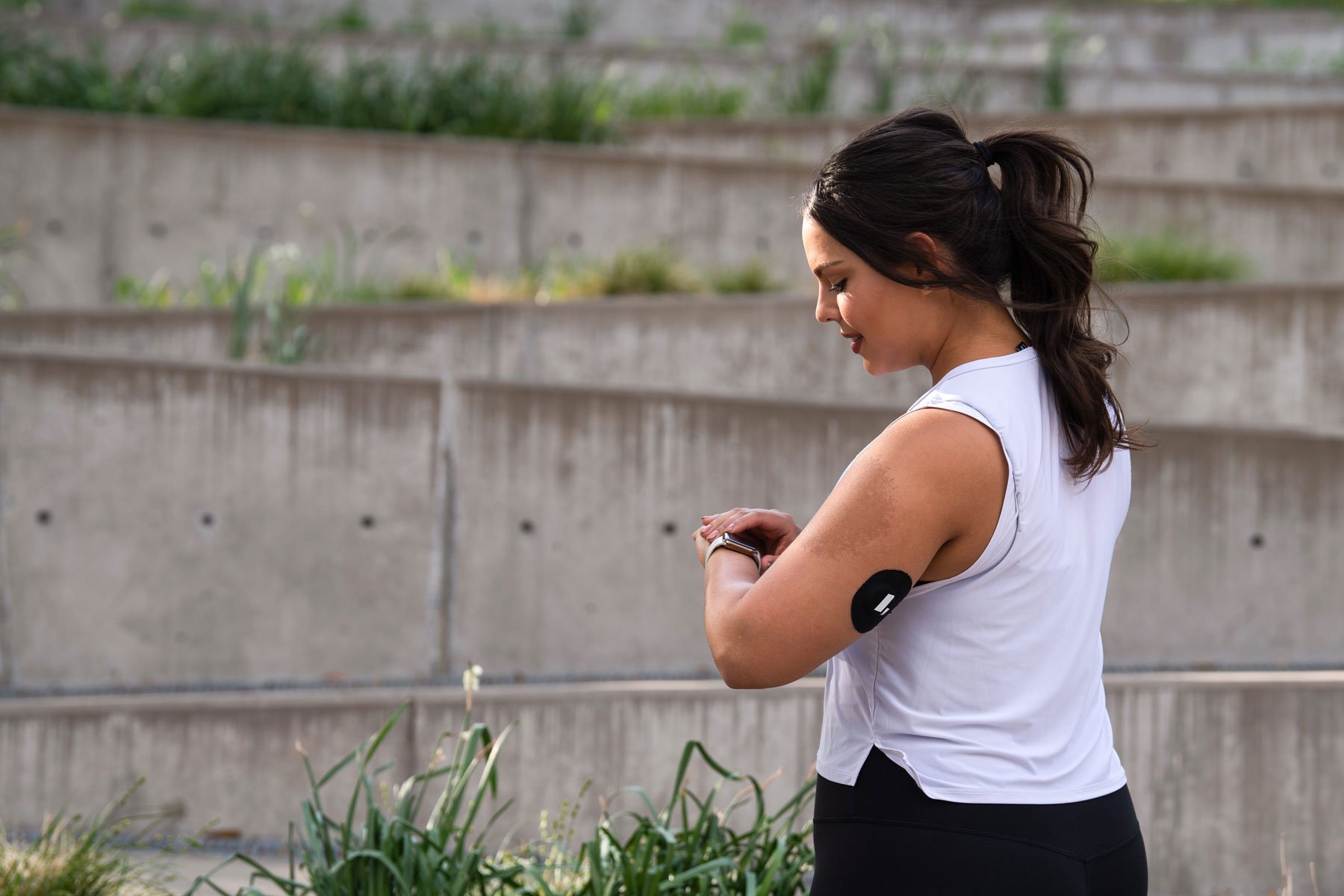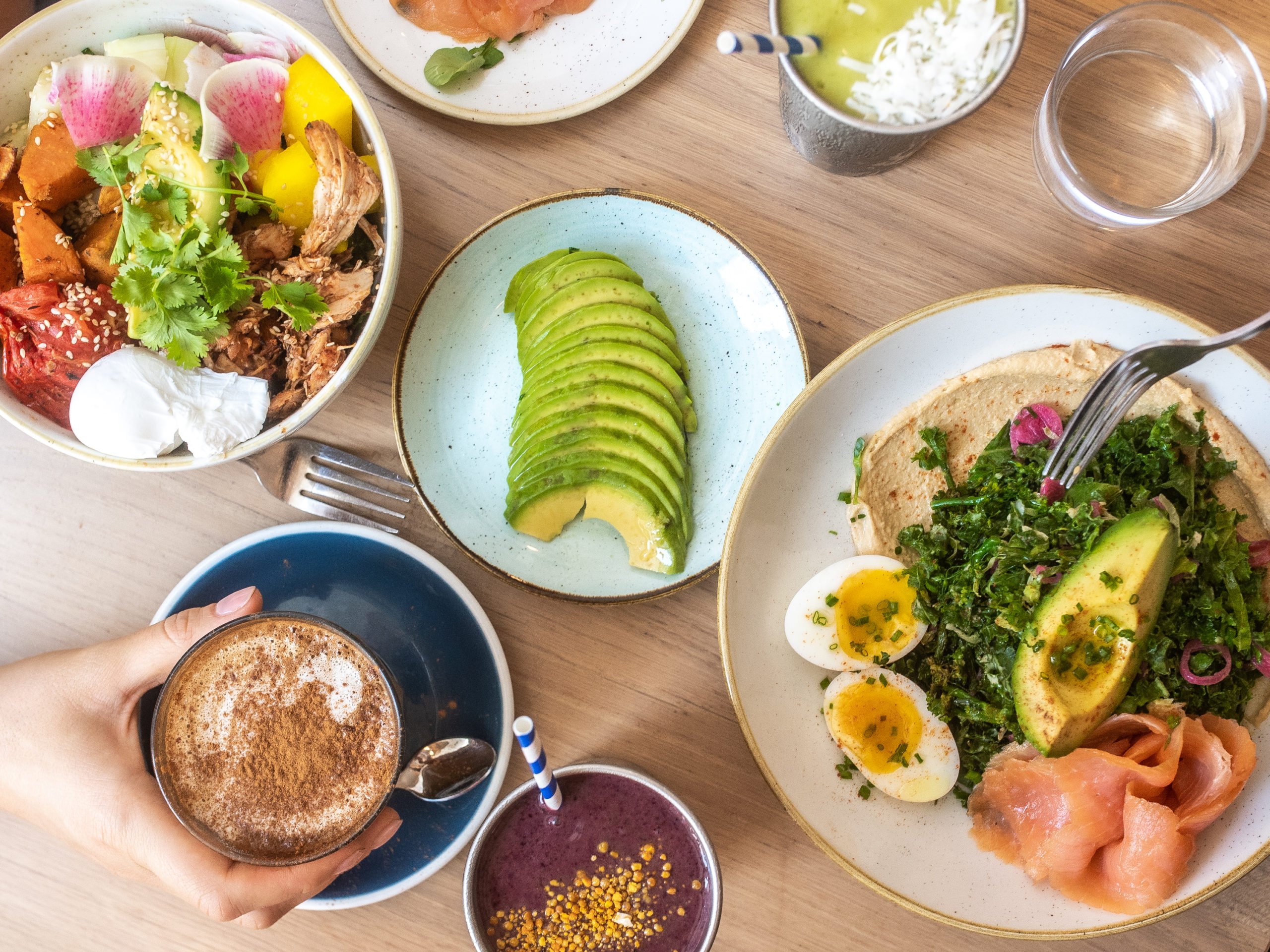Blood glucose responds to a variety of factors. Levels rise and fall throughout the day based on what and when we eat, our stress levels, how and when we exercise, our sleep quality, and more. To optimize metabolic health (and, in turn, support stable energy and mood, and lower chronic health risk), you want balanced blood sugar. That means blood sugar remains relatively stable and fluctuates within a reasonably narrow range.
Below, we explain why balanced blood sugar matters, what influences blood sugar most, and the best actionable tips to prevent spikes throughout the day. Fortunately, there are many areas to target, so you don’t need to completely overhaul any aspect of your diet or lifestyle.
Why Is Balanced Blood Sugar Important?
There is no official medical definition of balanced blood sugar. Still, many metabolic health experts agree that blood sugar levels should fall between 70 and 120 mg/dL for most of the day, encompassing post-meal and fasted periods—and it should rarely exceed 140 mg/dL. More specifically, some data suggests it may be optimal to aim for fasting glucose between 72-85 mg/dL (fasting blood glucose >100 mg/dL is considered prediabetes) and post-meal blood glucose rises of no more than 30 mg/dL. That kind of gentle post-meal rise doesn’t tax your metabolic systems too much.
Keeping blood sugar levels in a relatively tight range is vital for many aspects of physical and mental health. Repeated glucose spikes lead to repeated release of insulin, the hormone that prompts cells to take up glucose from the bloodstream so it can be burned for energy or stored. Too much of this glycemic variability may put you at risk of insulin resistance—a state in which the body’s cells are less responsive to insulin and blood sugar levels build to dangerous levels, eventually leading to prediabetes or Type 2 diabetes.
Additionally, high insulin levels block the body’s ability to burn stored fat. Elevated blood glucose is also associated with increased inflammation, oxidative stress, and glycation (i.e., when excess glucose in the body sticks to proteins, DNA, and lipids and contributes to tissue damage and dysfunction).
In the short term, these issues related to out-of-balance blood glucose may cause weight gain, fatigue, depression, anxiety, and impaired cognitive and workout performance. Over time, they may damage blood vessels and other tissues and increase risk (or drive the progression) of chronic conditions like diabetes, cardiovascular disease, cancer, kidney disease, and more.
What Affects Blood Sugar?
The factors below can all impact blood glucose over the short and long term. Here’s how:
Food
When we eat, we digest macronutrients (carbohydrates, proteins, fats) into smaller components that can be absorbed and used by the body. Carb-containing food is broken down primarily into a simple sugar known as glucose. Glucose is then absorbed into the bloodstream and causes blood sugar to rise. Depending on the amount of carbohydrate consumed, how it was processed, and other nutrients present, a rise in blood sugar may be rapid and steep or slow and low. For example, a high-carb, high-sugar food with minimal fiber, fat, and protein provides no buffers to slow the speed of glucose absorption and may therefore cause a rapid, steep spike. When blood sugar rises, the pancreas releases a surge of insulin. When things are functioning correctly, and a person is insulin sensitive (i.e., their cells respond to the effects of insulin and they are not insulin resistant), this allows blood sugar levels to drop back to a normal, pre-meal range within about two hours of eating.
Exercise
Active muscles use glucose as a source of energy (along with other fuels, like stored fat). Immediately in response to muscle contraction, a greater number of glucose transporter 4 (GLUT4) protein molecules move from the inside of muscle cells to the surface of cell membranes, where they help these cells suck up additional glucose from the bloodstream without the need for additional insulin. This, in turn, may help blunt blood sugar spikes or lower already elevated blood sugar. (Over time, regular exercise also increases the total number of GLUT4 transporters in skeletal muscle cells.) Exercise may help lower blood glucose for 24 hours (or longer) after a workout by making cells more sensitive to insulin. Remember that high-intensity exercise may cause a temporary increase in blood glucose, as this type of activity prompts the liver to release glucose from stored glycogen as an additional fuel source. But this isn’t a bad thing—and over time, high-intensity exercise improves fasting glucose and insulin sensitivity, promoting better glucose control.
Stress
When you experience anxiety, including psychological stress from work, relationships, parenting, the state of the world, or any actual or perceived threat, the body releases catecholamine hormones such as epinephrine and glucocorticoid hormones such as cortisol, which quickly boosts blood glucose levels. Here’s how it works: Cortisol and epinephrine stimulate the release of glucagon from the pancreas, which triggers glycogenolysis (the release of stored glucose into the bloodstream) and gluconeogenesis (the conversion of non-carb substrates like amino acids into glucose) and, simultaneously, these hormones suppress the release of insulin, making it harder for blood glucose to enter cells. This is your body’s way of keeping plenty of glucose readily available in the bloodstream for a “fight or flight” reaction—which came in handy for our ancestors when they encountered predators. Unfortunately, most stress today is not immediately followed by physical activity (which allows glucose to enter cells independently of insulin release), so blood glucose can remain elevated.With frequent bouts of acute stress and more prolonged periods of sustained stress, these processes are repeatedly triggered, which can lead to chronic hyperglycemia and its associated problems. Stress may also prompt you to eat more high-carb, high-sugar foods, further ramping up blood glucose.
Lack of sleep
Sleep deprivation and poor sleep quality can lead to a reduction in slow-wave sleep (considered the most restorative phase of sleep, during which several beneficial metabolic, hormonal, and neurophysiologic changes occur)—and getting less slow-wave sleep for even a few nights has been shown to decrease insulin sensitivity and glucose tolerance. Poor sleep can also increase sympathetic nervous system activity and cortisol production (just like stress!), which can elevate blood sugar and increase growth hormone secretion, reducing glucose uptake by muscle cells and thereby contributing to a blood sugar rise. Like stress, poor sleep could also prompt you to overeat high-calorie, high-carb foods the next day, which could spike blood sugar.
Other Health and Lifestyle Factors
Other things like hydration, caffeine intake, gut health, and environmental toxins may have modest effects on blood sugar.
- Gut health: Supporting your gut promotes metabolic health on multiple fronts. For one, eating fiber-rich foods encourages the proliferation of good gut bacteria that produce compounds called short-chain fatty acids (SCFAs). These SCFAs, in turn, appear to increase levels of a hormone called GLP-1, which helps signal the release of the blood sugar-lowering hormone insulin.
- Environmental toxins: Various chemicals and heavy metals found in personal care products, nonstick cookware, plastic water bottles, car exhaust, and other pollutants can make their way into our bodies and exert an endocrine-disrupting effect. Specifically, some of these chemicals (e.g., dioxins) have been implicated in insulin resistance and increased risk of diabetes—so curbing exposure is vital.
- Caffeine: Some people with diabetes may be extra sensitive to the effects of caffeine and experience blood sugar spikes even with unsweetened caffeinated beverages, likely due to caffeine’s impact on insulin action. For people without metabolic dysfunction, caffeinated drinks like coffee have been shown to trigger a short-term decline in insulin sensitivity.
- Hydration: Research suggests that dehydration may trigger processes in the body that impair blood glucose balance.
How Should I Eat to Balance My Blood Sugar?
1. Reduce sugar intake.
Our metabolic machinery isn’t designed to deal with the vast amounts of sugar in modern processed foods. Avoiding or significantly limiting added sugars is one of the most effective ways to curb blood sugar spikes. Added sugars don’t occur naturally in foods. They are processed and refined, provide no additional nutritional value, and are not packaged in a matrix of other nutrients (think: fiber, protein, fat) that might otherwise buffer or slow their entrance into the bloodstream—which can lead to pretty big spikes. For example, per Levels experts, the maximum you ideally want blood glucose to rise after eating a meal or snack is 30 mg/dL from fasting glucose levels; but in a Levels-conducted experiment, participants who consumed a single can of Coke (with 39 g added sugars) and remained sedentary for the next two hours experienced, on average, a 56.2 mg/dL spike.
Added sugars include table sugar, natural sweeteners (maple syrup, agave, honey, molasses), and high fructose corn syrup. They’re commonly found in sweetened beverages and foods (regular sodas, energy drinks, fancy coffees, desserts, baked goods, breakfast cereals, candy) but may also be added to more surprising items like protein powders or bars, sauces, and condiments like ketchup, dressings, and rice vinegar.
On packaged foods, you’ll see “added sugars” called out on the nutrition facts label. While zero added sugars is ideal, an occasional small amount (think: a couple of squares of dark chocolate or plain yogurt with a drizzle of honey for dessert) in the context of an otherwise metabolically healthy diet and active lifestyle isn’t something to stress about; metabolic health is about long-term trends and perfectly flat glucose isn’t the goal. But while the current USDA dietary guidelines suggest that you can eat up to 50g a day of added sugar, many metabolic health experts consider this way too high, particularly if eaten in ways that drive blood sugar spikes.
2. Limit other simple carbs.
Sugar isn’t the only carbohydrate to keep an eye on. You can also experience sharp rises from refined carbohydrates, which have had their natural fiber content either removed or significantly broken down during processing, making it much easier for the body to break down into simple sugars and absorb them into the bloodstream. Common refined carbs include wheat-based flours, like those found in breads, crackers, cereal, pasta, cookies, and pizza, as well as liquid carbs in some fruit juices and energy drinks.
On the other hand, focusing on whole and unrefined foods will help you minimize a blood glucose spike and help you get more micro and macronutrients. For example, studies comparing the impact of eating the same caloric amount of whole grains (least processed), coarse flour (moderately processed), and fine flour (highly processed) found that blood sugar and insulin rise more with each additional level of processing. (Note: Whole grains are still relatively carb-dense and may spike blood sugar for some, so consider favoring whole food carb sources like veggies, fruits, and legumes instead.)
We’re also lucky enough to live at a time when there are a variety of better-for-you packaged options that you can swap in for your high-carb faves—consider grain-free granola made with nuts and seeds; breads made from almond flour, flax, and sprouted grains; crackers made from seeds or veggies; pasta alternatives like konjac noodles.
3. Eat enough fiber.
Make sure most of your carbs come from minimally processed, fiber-rich sources. Fiber is an indigestible carbohydrate naturally found in whole or minimally processed plant foods that don’t raise blood sugar levels. Fiber also helps build a healthy gut microbiome and serves to slow down several processes, including the breakdown of starches into glucose, how quickly food enters the intestines from the stomach (gastric emptying), and the rate at which glucose enters the bloodstream—in turn, leading to more gradual rises in blood sugar. Levels advisors recommend 50 g of fiber per day.
The best way to boost fiber intake and maximize nutrient density? Focus on filling up most of your plate with non-starchy vegetables (think: brussels sprouts, broccoli, cabbage, green beans, bell peppers, mushrooms, asparagus, leafy greens), which will add bulk and fiber for satiety, as well as vitamins, minerals, and antioxidants, recommends registered dietitian Zoe Atlas, MPH, RDN. For example, a cup of cooked Brussels sprouts has 6 grams of fiber.
Other fiber-rich, nutrient-dense foods unlikely to spike blood sugar include chia seeds (10 g fiber per 2 tbsp), shelled edamame (5 g fiber per half cup, plus 11 g protein!), avocados (5 g fiber per half avocado), and low-sugar berries like blackberries and raspberries (4 g fiber per half cup).
Meals like salads, stir-fries, smoothies, veggie frittatas, and “grain” bowls made with cauliflower rice are all great opportunities to pack fiber-rich foods in one place.
4. Don’t eat “naked” carbs.
Even some “healthy” carbs that are unprocessed can cause blood sugar spikes if they’re a relatively dense source of total carbs (think: quinoa or oatmeal, beans and lentils, squash and sweet potatoes, mangoes, and grapes). So anytime you have carb-rich food, keep portions relatively small and pair them with additional foods that are rich in protein (meat, fish, eggs, plain Greek yogurt, cottage cheese, tofu, tempeh, edamame, hemp seeds), healthy fats (olive oil, avocado oil, butter, ghee), and fiber (listed above) to help lower your blood sugar response. Here are some pairings to consider:
- Fruit with cottage cheese or plain full-fat Greek yogurt
- Apple or pear slices with cheddar cheese
- Chia pudding made with milk, protein powder, fruit, nuts, and spices
- Banana with peanut butter sprinkled with chia seeds
- Smashed avocado and arugula on sprouted whole-grain toast topped with a fried egg
- Trail mix made with nuts, dry roasted edamame, and dried fruit
- Half a baked sweet potato with a fried egg, avocado, salsa, and cheese
- Whole grain bowl with edamame, olive oil, sauteed greens, herbs/spices, a drizzle of tahini, and chicken or tofu
- A piece of dark chocolate slathered with nut butter
- Brownies or other baked goods baked with collagen powder (look for specific recipes that have already been tested)
- Eating traditional desserts in small portions right after a meal that contains protein, fiber, and fat will also help buffer your blood sugar response
We’ve already discussed why fiber is great—protein and fat play similar roles in blood sugar. Both protein and fat stimulate the release of a gut hormone called cholecystokinin (CCK), which helps slow the rate at which food enters the intestines from the stomach, which is linked to increased feelings of satiety and slower absorption of glucose into circulation. Eating protein and fat also helps suppress the hunger hormone ghrelin and stimulates the release of a range of other gut hormones, such as GLP-1 and PYY, that enhance feelings of fullness and may prevent the overconsumption of foods that could spike blood sugar.
While needs for each macronutrient vary by individual, a good general rule for active adults is to get 20 to 30 g protein per meal and eat enough protein per day to meet physiological demands (typically between 1.2 and 2.0 g/kg/day for active adults); and, per experts, you’re probably getting enough fat if you regularly dress salads and cook veggies with a healthy source of fat like olive oil and add whole-food fat sources like avocado, nuts, and seeds to meals and snacks.
Other Habits for Balanced Blood Sugar
1. Go for a walk.
After meals, lace up your sneakers. Several studies show that post-meal walks are one of the best ways to reduce the glucose response (i.e., they help you achieve more of a rolling glucose curve rather than a sharp spike after eating carbs). This makes sense since exercise helps muscle cells uptake glucose without additional insulin. So, walking lowers blood sugar levels more rapidly than when you remain sedentary after a meal.
Timing of your post-meal walk matters, too—in a 2023 meta-analysis, researchers found that exercise, such as a 20-minute walk, within 30 minutes after a meal was more effective at blunting post-meal hyperglycemia compared to exercising later or exercising shortly before the meal. Additionally, the latest Levels Coke experiment found that people who walked for 30 minutes after drinking a can of Coke had a 28% lower glucose spike than those who remained sedentary.
2. Avoid late meals.
Our bodies become less insulin sensitive (i.e., less responsive to the blood sugar-lowering effects of insulin) as the day goes on—so if you consumed identical meals at 8 am and 8 pm, the rise in blood glucose after the nighttime meal would typically be more significant. This is why some experts recommend avoiding higher-carb meals at dinner and stopping eating well before bedtime.
In a 2022 meta-analysis, researchers found that people who had been assigned to diets where they ate the majority of their calories earlier in the day lost more weight and had greater improvements in insulin sensitivity, blood sugar, and cholesterol levels than people who ate more of their calories in the evening; and in a 2020 randomized crossover trial, healthy adults experienced an 18% higher blood sugar spike and a 5% increase in cortisol levels when they ate dinner at 10 pm compared to when they ate the same dinner at 6 pm.
The mechanisms responsible for these time-related variations in glucose response and insulin sensitivity aren’t totally clear, but some researchers speculate that it’s related to circadian rhythm-regulating hormones, like melatonin, which begins to rise as the sun goes down.
While there’s no magic cutoff time for your evening meal, some experts recommend stopping eating within 2-4 hours of bedtime. If you have to eat later, it’s even more important to stick to minimally processed foods that are low in carbs and less likely to trigger a spike.
3. Try mindful breathing or meditation practice daily.
Taking a few minutes out of your busy schedule to meditate or do some slow, deep breathing may effectively curb stress and its glucose-elevating effects. A 2023 meta-analysis found that mindfulness exercises that bring focus to the present moment are associated with improved glycemic control among people with diabetes; and, in a 2020 intervention study, patients with diabetes who underwent mindfulness education, including breathing exercises, had increased happiness and decreased blood glucose and HbA1C after three months.
While authors of the meta-analysis say the exact glucose-lowering mechanism of mindfulness has not been determined, it likely relates to a reduction in sympathetic nervous system activity (activation of the sympathetic nervous system results in the release of stress hormones like epinephrine and cortisol that elevate blood glucose and oppose insulin action).
Not sure where to start? Consider a guided meditation app like Headspace or Calm, or try a simple box breathing exercise. Here’s how to do it:
- Breathe in through the nose for a count of 4.
- Hold breath for a count of 4.
- Breathe out for a count of 4.
- Hold breath for a count of 4.
- Repeat 4 times; adjust the length of each breath and hold as needed; and if you notice your thoughts start to wander, gently bring them back to the pattern of your breathing.
4. Listen to your body.
While there are a lot of helpful generalizations that research allows us to make about food, activity, sleep, and stress—and how these relate to blood sugar—the truth is that everyone responds differently. This is why it’s essential always to be mindful of how you feel after eating certain foods or performing certain activities. Using a continuous glucose monitor (CGM) is also one of the simplest ways to learn your glucose responses to build healthy habits that support long-term stable blood sugar.
 Learn how to balance your blood sugar
Learn how to balance your blood sugar
The best way to understand what habits and foods help you achieve balanced blood sugar is with a continuous glucose monitor and an app like Levels to help you interpret the data. Levels members get access to the most advanced CGMs and personalized guidance to build healthy, sustainable habits. Click here to learn more about Levels.
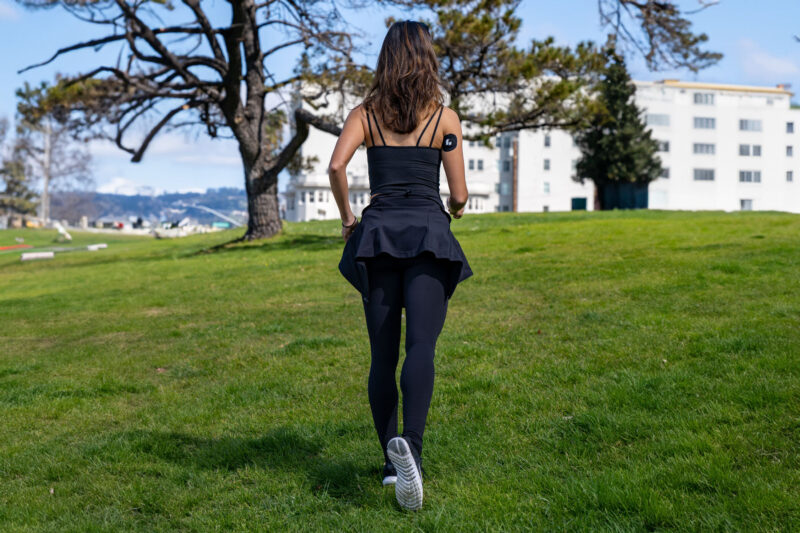
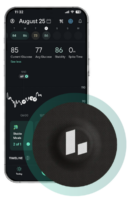 Learn how to balance your blood sugar
Learn how to balance your blood sugar
